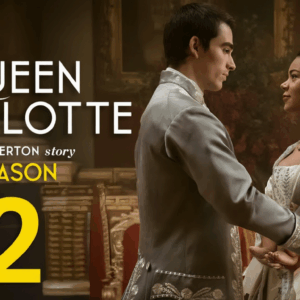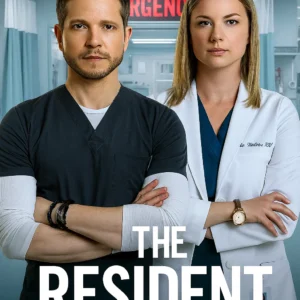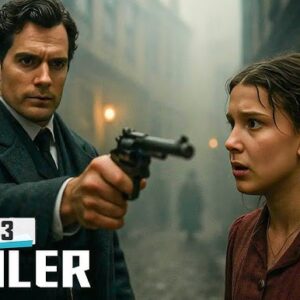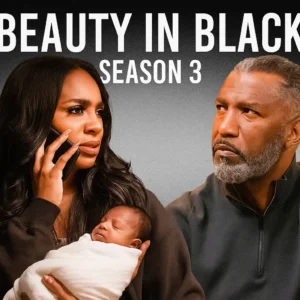
The sophomore slump is a phenomenon all TV shows with breakout first seasons are in danger of experiencing. But maybe no show has ever sophomore slumped harder than HBO’s “True Detective.”
In January 2014, when the anthology series first premiered telling the offbeat story of Louisiana police investigating the murder of a young woman, “True Detective” was immediately hailed as one of the best shows of the (still barely begun) year. Nic Pizzolatto’s detective drama was a surprising, unconventional, philosophical story dressed in the conventions of a typical murder mystery, and proved intensely ambitious in its attempts to explore questions of religion, masculinity, and human nature. The universal acclaim powered it to several Emmy nominations, and the show — one of many seasonal anthologies of the time like “Fargo” and “American Horror Story” — seemed like the next great prestige TV hit.
Then, the show’s second season, following a California missing persons case and the overlapping work of three police officers (played by Colin Farrell, Rachel McAdams, and Taylor Kitsch) premiered in June 2015. Immediately upon its premiere, the muddled and confusing season seemed to kill the show’s momentum, receiving critical scorn and divisive reactions from fans. If the season isn’t as bad as it seemed compared to its predecessor, it still wasn’t what was needed to turn the first outing into a continuing phenomenon.
Since its first season, “True Detective” has never quite managed to again obtain the heights of acclaim and attention its debut run received. But it continued with a delayed third season in 2019, four years after Season 2. That installment, with Mahershala Ali in the lead role, was excellent but largely went under the radar, and the show again disappeared. When it resurfaced again this year, it came back in a new form; subtitled “Night Country,” Season 4 of the series was handed off to writer Issa López, and pivoted from the show’s sweaty southern stories to an arctic tale centering a female detective duo played by Jodie Foster and Kali Reis. It was a change that prompted some grumblings from fans of the show, and Pizzolatto (still credited as an executive producer) has made it no secret that he doesn’t approve of the show being continued without his involvement.
But “Night Country” managed to do what Seasons 2 and 3 of the anthology failed to do: bring the series back into the limelight, with critical praise and healthy viewership. It’s unclear where the series will go after “Night Country;” one can imagine the franchise becoming a platform for creators to drop in for a season with their own takes on the format, rather than the auteur series anchored by one perspective it originally was. Regardless of your feelings on that change, “Night Country” certainly stands on its own as a thought-provoking, memorable, and riveting season of television, and an installment worthy of carrying the “True Detective” name.
With the sun finally risen on “Night Country,” IndieWire has decided to take stock of the seasons of HBO’s mystery anthology to determine what stands out as the all-time greatest. Read on for our list of the show’s four seasons, ranked from worst to best.
4. Season 2 (2015)
Being a few more years separated from the hype of Season 1 at this point does “True Detective’s” sophomore outing some favors; viewed as a single installment, the Colin Farrell, Rachel McAdams, Vince Vaughn, and Taylor Kitsch-led season isn’t the disaster many touted it as at the time. But time can only do so much, and although Season 2 isn’t terrible, it’s the clear weak link in an otherwise solid anthology. The season’s ambition should be commended: In following up on a genuine phenomenon, Nic Pizzolatto opted to tell an interweaving tale of officers from three competing police departments as they work on a case involving the disappearance of a California town’s city manager. But the actual execution of the season left a lot to be desired; Season 2 is frequently stiff and airless, with muddled storytelling, undeveloped characters, and a grim tone that frequently verges on parody status. There are some pleasures to be found in Farrell and McAdams’ performances (Vaughn’s…less so) and the gorgeous cinematography, but its runt-of-the-litter reputation isn’t exactly undeserved.

3. Season 3 (2019)
Season 3 of “True Detective” arrived five years after the show’s iconic first outing, and the extended hiatus meant that Pizzolatto’s third season of the show got (unfortunately) buried and largely ignored upon its 2019 premiere. Those willing to visit it now will find an underrated, excellent slow-burn story, featuring a dynamite performance from Mahershala Ali. Set in the Ozarks and spanning three decades, Season 3 of the show follows Ali’s Wayne Hays and his partner Roland (Stephen Dorff) as they investigate the mysterious disappearance of two missing children. But the mystery feels less central than the show’s character study of Hays, following him across the decades as he grows from a Vietnam veteran searching for a place in the world to a family man, and prioritizing his romantic connection with schoolteacher Amelia (an excellent Carmen Ejogo) over the criminal case. The season is capable of the grisly heights of the original outing, but its hopeful message of finding light in the darkness makes for a surprisingly touching tale.

2. “Night Country” (2024)
In many respects, the worst part of “Night Country” is the fact that it is a “True Detective” season. Issa López’s work frequently reads as an original cop drama refashioned into an installment of the HBO brand franchise, and its connections to Pizzolatto’s original seasons hamper it in various ways: the strained callbacks to the 2014 first season, the feeling that its exploration into the mystic was limited by the conventions of what people expect when they see the title “True Detective.”
On the other hand, “Night Country” is perhaps the best installment of the show since the original because of its radical differences; it recreates the experience of watching the first season a decade ago and feeling the emergence of a new talent. López crafts a vividly etched world in the town of Ennis, Alaska, where the sun sets one day in the winter and remains gone for weeks. Jodie Foster and Kali Reis are the most dynamic detective duo since Harrelson and McConaughey’s original pair, two stubborn, often self-destructive women with a complicated and nuanced history together. Their investigation into the strange disappearance of men at a research station is a constantly surprising journey through the Arctic and a town strained by tension between the white inhabitants and the Indigenous community. The female-focused detective drama might depart from what we expect from “True Detective,” but it’s still an excellent story all the same.

1. Season 1 (2014)
The perception that “True Detective” only had a good first season before it ran out of gas isn’t entirely accurate; if nothing else, Season 3 proves that Pizzolatto had more than just one story to tell. But with that said, there’s a reason why that original 2014 season was such a phenomenon. It remains the series’ best, a swampy, weird, and headily metaphysical story of a Louisiana murder case. As the troubled Rust Cohle, Matthew McConaughey has maybe never been better, while Woody Harrelson is his near equal as the more straight-edged Marty Hart. Pizzolatto’s writing is sharp and unexpectedly philosophical, while the direction is crisp and gorgeous. It has some sour points (the treatment of women in the narrative hasn’t aged well and was questionable at the time) but Season 1 largely deserves the iconic status placed on it.





